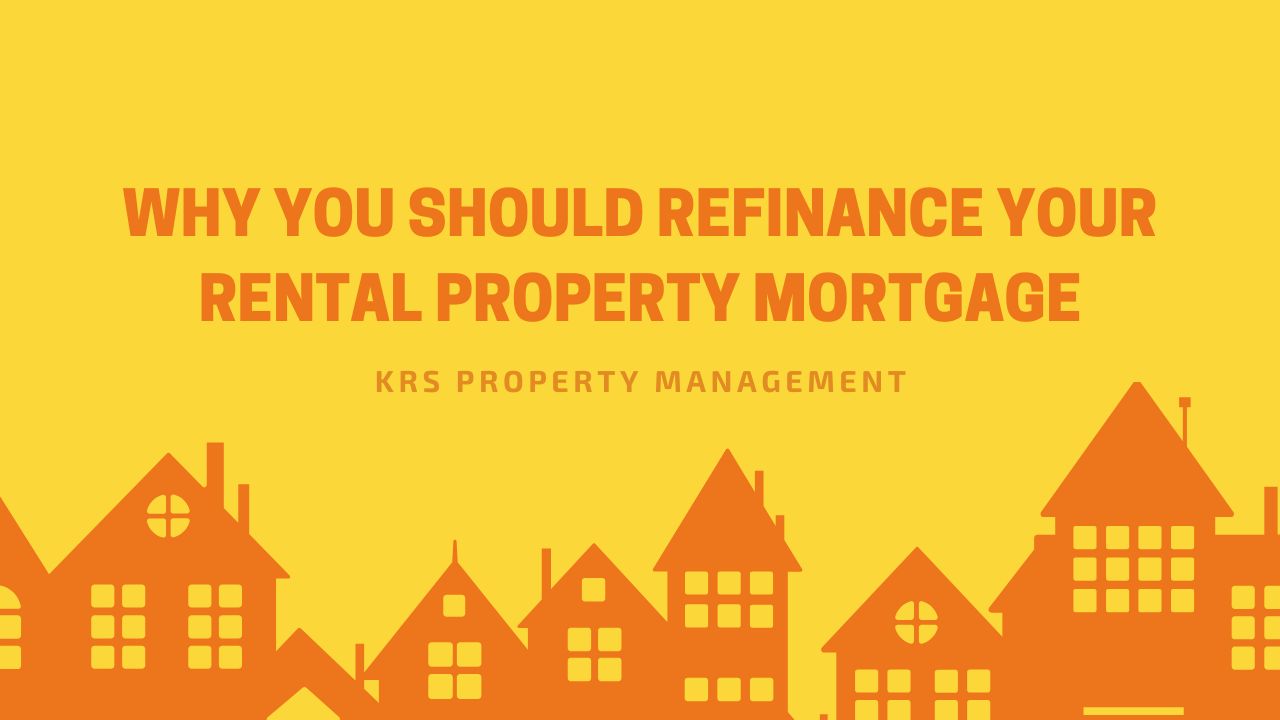Key Takeaways
Refinancing Strengthens Long-Term Investment Strategy: Beyond lowering rates, refinancing can improve cash flow, restructure debt, and unlock equity for growth.
Lenders Require Stricter Qualifications: Expect higher credit standards, lower DTI thresholds, and at least 25% equity to secure favorable terms.
Preparation Smooths the Process: Organized documents, rate shopping, and understanding costs help landlords secure refinancing that aligns with their goals.
Rental properties can build long-term wealth and generate steady cash flow, but financing conditions are always shifting. Interest rates fluctuate, cash needs evolve, and sometimes a financial reset is the smartest move.
Refinancing offers landlords an opportunity to unlock equity, reduce monthly costs, or restructure debt to better match long-term goals. With rates easing after recent volatility, many investors are re-evaluating their options.
In this guide from KRS Property Management, we’ll walk through the key reasons to refinance a rental property mortgage, when it makes the most sense, and how it can strengthen your overall investment strategy.
Why Refinancing Can Strengthen Your Portfolio
Refinancing isn’t just about chasing a slightly lower interest rate. Done thoughtfully, it’s a powerful tool to optimize performance, free up cash, and strategically grow your holdings.
1. Lower Borrowing Costs
Even a small rate reduction can translate into major savings over the life of a loan. Consider a landlord with a $150,000 mortgage.
Dropping the rate from 6% to 5% saves nearly $34,000 across the loan term. That’s money you can redirect into property upgrades, reserves, or future investments.
2. Flexibility in Loan Terms
Refinancing allows you to change the shape of your debt. Opting for a shorter term increases monthly payments but reduces total interest, accelerating equity buildup.

Extending the term has the opposite effect, easing cash flow pressures but lengthening repayment. Both paths can be useful depending on your financial goals.
3. Improved Monthly Cash Flow
Cash flow is the lifeblood of real estate investing. By lowering monthly obligations through reduced rates or longer terms, you free up capital for maintenance, emergency funds, or new ventures.
Stable, predictable cash flow not only supports property upkeep but also positions you to act quickly on future opportunities.
4. Access to Equity Through Cash-Out Refinancing
For properties that have appreciated in value, a cash-out refinance can unlock equity built over years.
That lump sum can fund renovations, pay off high-interest debt, or serve as a down payment on another property. Used wisely, it becomes a springboard for portfolio expansion.
5. Enhancing Property Value
Strategic upgrades financed through refinancing can attract higher-paying tenants. Modern kitchens, energy-efficient systems, or refreshed curb appeal don’t just boost rent, they raise the property’s overall market valuation. In competitive rental markets, these improvements pay for themselves.
What Lenders Expect from Rental Property Owners
Qualifying to refinance an investment property is often more demanding than refinancing a primary residence. Lenders weigh risk differently when the borrower doesn’t live in the home.

Expect stricter benchmarks in these key areas:
Loan-to-Value (LTV): Many lenders require at least 25% equity in the property, although rates can vary depending on the loan type and borrower’s profile.
Credit Score: While some programs allow scores around 620, aiming above 670 greatly improves approval odds and loan terms.
Debt-to-Income (DTI): A lower DTI reassures lenders you’re not overextended. Strong rental income helps, but lenders still want to see overall financial stability.
Proof of Income: Be ready with tax returns, W-2s, or pay stubs. Not every lender fully counts rental income, so diversified earnings strengthen your case.
By understanding these requirements ahead of time, you’ll be better prepared to present a strong application and secure the most favorable refinancing terms available.
Step-by-Step Guide to Refinancing Your Investment Property
For landlords new to refinancing, the process is fairly structured:
Prepare Documents: Collect income statements, tax returns, mortgage statements, and proof of insurance. Organization at this stage saves headaches later.
Shop Lenders: Rates and terms vary widely. Submitting applications to multiple lenders gives you options and negotiating leverage.
Rate Lock: Once you find favorable terms, lock the rate to protect against market fluctuations during processing.
Underwriting: The lender reviews financials, property value, and tenant income. This can take a week or more, depending on complexity.
Closing: After approval, you’ll sign paperwork, pay closing costs, and finalize the new loan.

Following these steps with preparation and patience can streamline the process and help you secure a refinance that supports your long-term investment goals.
Benefits vs. Trade-Offs
Refinancing an investment property can be a powerful tool, but it comes with both upsides and challenges. On the plus side, landlords may be able to lower their monthly payments by securing a better interest rate or extending their loan term.
Refinancing also opens the door to tapping into built-up equity, creating liquidity that can be used for renovations, new property acquisitions, or other financial needs. In some cases, the continued deductibility of mortgage interest can even provide meaningful tax advantages.
At the same time, there are trade-offs to weigh. Rental property loans typically carry higher interest rates than primary residences, and the upfront expenses, such as appraisals, origination fees, and closing costs can eat into short-term savings.
Lenders also apply tougher standards for approval, scrutinizing credit scores, income stability, and equity levels more closely. Understanding both the benefits and the drawbacks ensures you make a refinancing decision that aligns with your long-term investment strategy.
An Alternative Path
Not every investor wants to refinance an existing loan. Some use cross-collateralization, pledging one property as collateral for a new loan while leaving the current mortgage untouched.
This can unlock capital for acquisitions or renovations without altering existing financing terms. It’s a niche strategy, but for investors with multiple properties, it provides flexibility without starting over.
Bottom Line
Rental property refinancing isn’t just about better rates. It’s about building resilience into your portfolio, adapting to market conditions, and leveraging equity to grow wealth.
From traditional refinancing to cash-out options and alternative strategies, investors have multiple pathways to optimize their holdings. The smartest move is the one that strengthens both today’s balance sheet and tomorrow’s opportunities.
If you’re ready to explore how refinancing can unlock hidden value in your rental business, contact us today. Let KRS Property Management guide you through the process.







